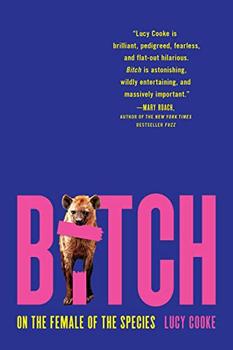Summary | Excerpt | Reviews | Beyond the Book | Readalikes | Genres & Themes | Author Bio

On the Female of the Species
by Lucy Cooke
So where was all this virilization coming from? The bitches' pseudo-penises pointed to a different timing for testosterone's influence, namely during fetal development.
The standard paradigm for sexual differentiation was developed in the 1940s and '50s by a French embryologist named Alfred Jost, following a series of pioneering, if barbarous, experiments on rabbit fetuses at various stages of development in their mother's womb.
Mammal embryos, whether they're female or male, all start off with a unisex kit of parts: an assortment of ducts, tubes and proto-gonadal tissue with the potential to develop into either ovaries or testes. The developing fetus is thus considered sexually 'neutral' until this primordial sexual medley starts its journey down the ovarian or testicular path.
Jost's experiments on developing rabbits didn't figure out what triggers the initial differentiation (more on that later), but he did establish that testosterone plays a primary role in driving the fetal gonad towards becoming testes and the subsequent development of male genitalia.
Jost discovered that if he removed the male embryonic gonads early in development, the fetus failed to grow a penis and scrotum and developed a vagina and clitoris instead. Removing the developing ovaries of a fetal female, on the other hand, did not obviously impact her sexual development. Oviducts, uterus, cervix and vagina all developed in an apparently automatic fashion without the need of her embryonic ovaries or their hormones to direct them. In contrast, just 'a crystal of androgen could counteract the absence of testicles' and ensure the development of male sexual characteristics, heralding this sex steroid to be the dynamic elixir of maleness.
By a process of elimination over dozens of experiments Jost established that high concentrations of testosterone in the male fetus, produced by the developing testicular cells, actively pushed an embryo down the path of male sexual development. In contrast, the creation of a female was seen as a passive process – the 'default' result of an absence of gonadal testosterone.
Jost's theory slotted in nicely with the widespread notion, popularized by Darwin, that females were generally passive and males active. The theory was embellished by others and labelled the Organizational Concept – the universally accepted model for sexual differentiation not just of bodies, but behaviour too. It placed male gonads and androgens in the starring role – the saviours of the sexual paradigm and chief architects of all things male.
Testes and their testosterone-pumping powers became the engine driving the demarcation of not just the embryonic gonads and genitals, but also the fetal neuroendocrine system and developing brain. This then programmed sexual differences in bodies and behaviour that could be activated by sex steroid hormones in later life. Thus testosterone became the executive director of sexual dimorphism; responsible for characteristics ranging from the hefty horns on the stag to the bull elephant's raging musth and the male walrus's fearsome size and temper.
Jost's findings revolutionized the ongoing debates in endocrinology on the hormonal origins of masculinity and femininity. At a conference in 1969, Jost explained: 'Becoming a male is a prolonged, uneasy and risky adventure; it is a kind of struggle against inherent trends toward femaleness.'
The masculine journey was seen as a heroic quest worthy of investigation. In contrast, the now-famous French embryologist referred to females simply as the 'neutral' or 'anhormonal' sex type. Ovaries and oestrogen were considered irrelevant to our story: inert and insignificant. Our sexual development was unreactive and scientifically trivial. Females basically 'just happened' because we lacked the embryonic balls to be male.
This prejudice has been remarkably enduring and damaging. The legacy of the Organizational Concept is an understudied female system and an unyielding binary view of sexual differentiation, as promoted by the all-powerful developmental male-wash of testosterone. But then along came the spotted hyena with her big phallic clitoris to suggest there's trouble in the paradigm.
Excerpted from Bitch by Lucy Cooke. Copyright © 2022 by Lucy Cooke. Excerpted by permission of Basic Books. All rights reserved. No part of this excerpt may be reproduced or reprinted without permission in writing from the publisher.






Your guide toexceptional books
BookBrowse seeks out and recommends the best in contemporary fiction and nonfiction—books that not only engage and entertain but also deepen our understanding of ourselves and the world around us.